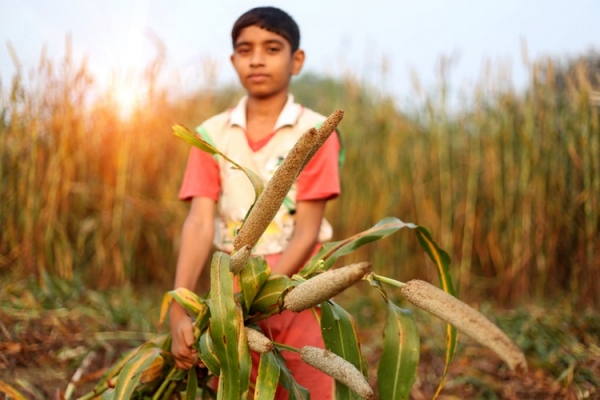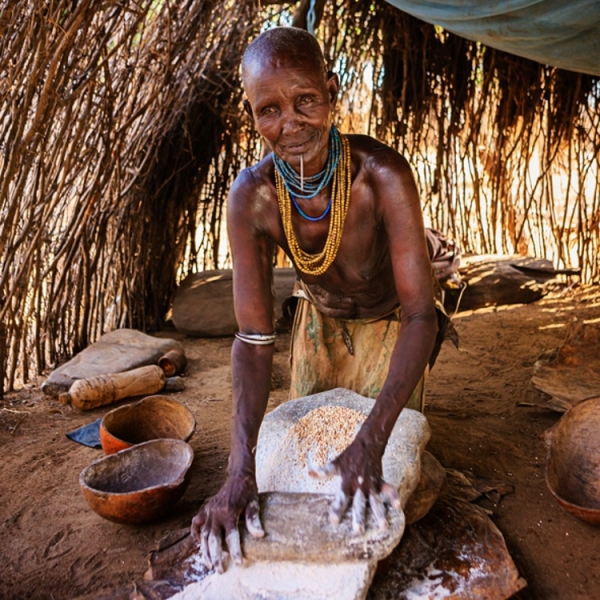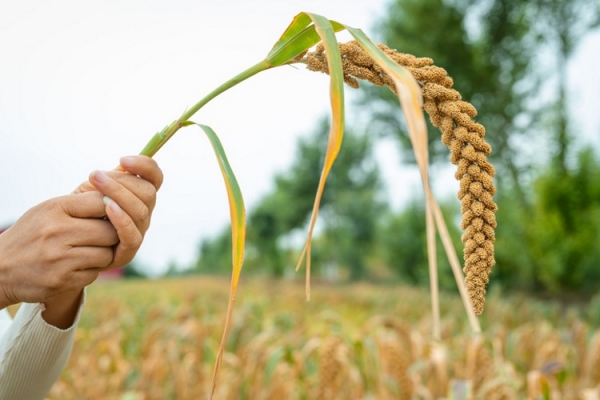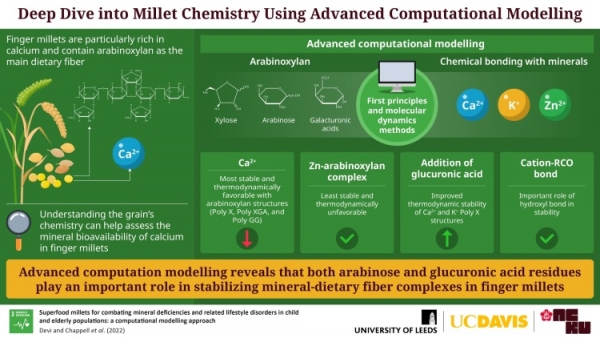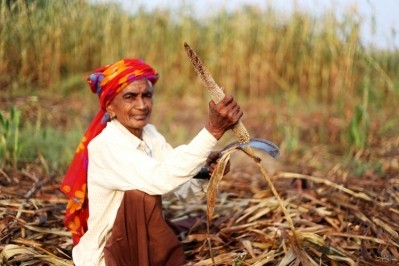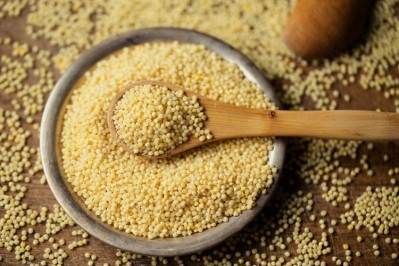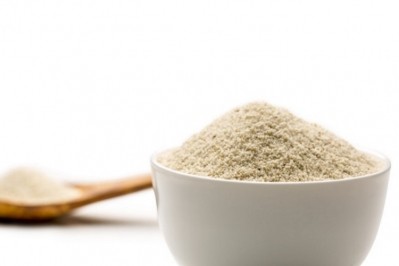Research paves the way for millet types that are rich in bioavailable minerals to counter malnutrition
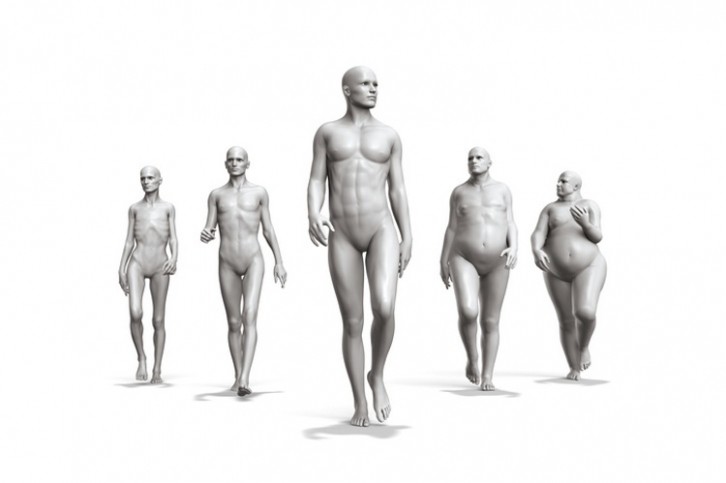
The study - published in Solutions for Sustainable Development in Asia - provides insights into how millets can help developing countries to combat mineral deficiencies and malnutrition.
The role of millets in the SDGs
The UN General Assembly declared 2023 the International Year of Millets to drive a collective effort to raise awareness of the cereal’s contributions to its 2030 Sustainable Development Goals, specifically SDG2 (zero hunger), SDG3 (good health and wellbeing) and SDG13 (climate action).
Once a forgotten staple of traditional Indian cuisine, the nutritionally dense cereals are becoming popular the world over, thanks to their nutritive value, their invaluable role in empowering small farmers, tackling food security issues and agricultural benefits.
Increasing millet's prevalence in global diets - both in developing and high-income countries - by 10% would not only substantially increase nutrient supply, but also dramatically reduce environmental burden.
Millets are high in nutrition, especially minerals, dietary fibres, proteins and antioxidants. They are drought resilient crops, don’t need much fertiliser and can grow in very poor and low fertile soils in dryland conditions.
Additionally, the grains meet climate goals by 1) improving food production in global warming and climate change conditions and 2) reducing synthetic fertilizer and pesticides usage.
Millets have been a staple food in India and parts of Africa for centuries, but the earliest domestication of common millet (Panicum miliaceum) actually dates back 10,000 years ago to Neolithic China.
There are numerous types of millets, but some of the most popular are sorghum (jowar), pearl millet (bajra), fonio (hungry rice or acha rice), finger millet (ragi), barnyard millet (jhangora), foxtail millet (kagni) and kodo millet. A grass species, these vary in colour, size and texture, but share roughly the same nutritional profile.
Finger millets, in particular, have drawn increased attention in recent years due to their abundant calcium content, the highest among all cereals at 344mg/100g.
As such, millets are perfectly poised to combat mineral deficiencies, which are especially prevalent in developing countries.
The grains are increasingly gaining traction among policymakers in high-income countries, too, which continue to struggle with ‘hidden hunger’, the result of following a diet of highly processed foods that are short on micronutrients. Lifestyle-based diseases such as obesity, diabetes, osteoporosis and hypertension are linked to the deficiency of important minerals. Increasing millet’s prevalence in global diets by 10% would substantially increase nutrient supply and reduce environmental burden, according to a 2021 study published in Environmental Research Letters, increasing millet’s prevalence in global diets by 10% would substantially increase nutrient supply while reducing environmental burden, particularly in Africa and the Middle East.
However, millets are also rich in dietary fibres (DFs), which have demonstrated a negative impact on mineral bioavailability; that is, the amount of minerals that are absorbed by the human body.
Deep dive
With a paucity of data on how the interplay between mineral-rich foods and DFs affects human metabolism, a team of scientists backed by the WUN Global Research Group (Asia SDGs) embarked on a study to identify the degree to which the bioavailability of minerals is affected by DFs, hoping to find a solution to the stagnating issue of mineral deficiency and malnutrition.
“Our earlier studies deep dived into finger millet chemistry using computational modelling, thus providing important results in understanding the mineral availabilities of the crop,” said lead researcher Dr Apramita Devi from the University of California.
he newer study aimed to bridge the gap in compositional data of dietary fibre, minerals and polyphenols in different millets.
The Global Research Group - Asia SDGs was initiated by National Cheng Kung University (NCKU) with the support of Worldwide Universities Network (WUN), to study, compile, implement and promote the best practices related to SDGs.
“We wanted to understand the macro (dietary fibre, polyphenols) and micronutrient (minerals) composition and their interactions in other millets, using experimental and computational techniques,” added Dr Devi.
The study’s main focus was to investigate how the primary dietary fibre in millets - arabinoxylan - interacted with calcium, zinc and potassium.
Findings revealed the presence of two monosaccharides - xylose and arabinose - in the arabinoxylan structure determined a mineral’s bioavailability.
While the DF was able to bind to the calcium (Ca2+) and potassium ions (K+), its ability to bind to zinc ions (Zn2+) was poor. According to the scientists, the high abundance of calcium in finger millets might be due to the structure of the DF.
As such, the team said this could be a target site for developing high calcium biofortified millet varieties. However, they stressed the bioavailability of calcium will ultimately depend on the gut metabolism of the mineral-fibre complex.
Future implications
The study opens an important avenue of research, prompting deeper investigations on how millet chemistry affects mineral bioavailability and whether all millet varieties can act as sufficient sources of these minerals.
“Our research will pave the way for the discovery of millet types that are rich in bioavailable minerals,” said Dr Devi.
“Such millets will be able to promote bone health in old and young people as well as address mineral deficiencies.”
Studies:
Authors: Apramita Devi, Tsair-Fuh Lin, Helen Chappell, et al.
Solutions for Sustainable Development in Asia (2022)
Health benefits of finger millet (Eleusine coracana L.) polyphenols and dietary fiber: a review
Authors: Palanisamy Bruntha Devi, Rajendran Vijayabharathi, et al
J Food Sci Technol. 2014 Jun; 51(6): 1021–1040.
doi: 10.1007/s13197-011-0584-9
PMCID: PMC4033754
PMID: 24876635
Authors: Dongyang Wei and Kyle Frankel Davis
Environ. Res. Lett. (2021) 16 125006
Doi: 10.1088/1748-9326/ac32fc
